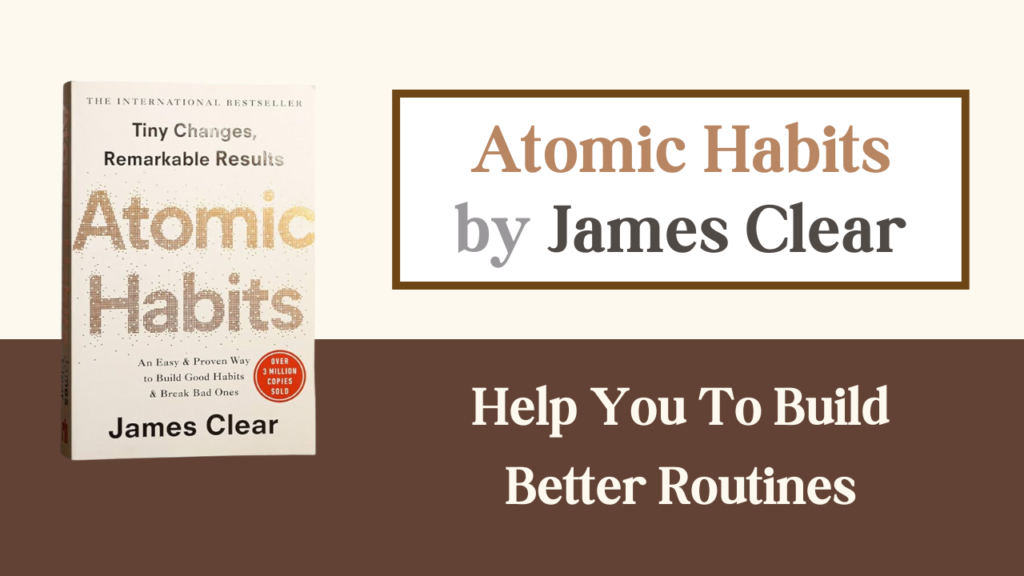Introduction of Atomic Habits
James Clear’s Atomic Habits has emerged as a transformative guide in the realm of personal development since its 2018 publication. Through its insightful analysis and practical advice, Clear demonstrates how making small, consistent changes can lead to profound and lasting transformations. This review explores the core concepts of the book, highlights key takeaways, and illustrates how these principles can be applied to enrich various aspects of life.

The Core Concepts of Atomic Habits
At its core, Atomic Habits is built on the principle that significant results stem from small, incremental changes. Clear asserts, “You don’t elevate yourself to the height of your goals; instead, you fall back to the quality of your systems.” This assertion underlines the book’s central message: rather than focusing solely on lofty goals, the key to success lies in creating and refining effective systems.
Clear introduces the concept of atomic habits—small adjustments that, while seemingly minor, compound over time to produce remarkable outcomes. As Clear puts it, “Habits are the compound interest of self-improvement.” This notion is vividly illustrated with the story of the British cycling team, which achieved extraordinary success by making 1% improvements across multiple areas. This example highlights that significant achievements often result from the accumulation of minor enhancements.
Unpacking the Four-Step Model
Clear’s four-step model of habit formation—Cue, Craving, Response, and Reward—serves as the foundation for understanding and altering habits. Each component plays a crucial role in the habit loop:
- Cue: The Cue is the signal that starts the habit. Clear highlights the necessity of making these cues clear and easy to recognize. He notes, “If you want to make a habit a big part of your life, you need to make it easy to start.” For example, if you want to build a reading habit, place books in visible locations to remind you to read.
- Craving: This is the drive or motivation that fuels the desire to engage in the habit. Clear advises that associating positive feelings with the habit enhances motivation. He writes, “The craving is what drives the behavior. Without craving, there is no behavior.” Creating a pleasurable environment or pairing the habit with something enjoyable can boost your motivation.
- Response: The Response is the actual behavior or action taken. Clear argues for making this response as easy as possible to increase adherence. He suggests, “The more difficult a behavior is, the less likely it is to occur.” Simplifying the process can lower the barrier to entry. For instance, if you want to exercise, start with a simple routine that requires minimal time and effort.
- Reward: The Reward is the gratifying outcome that reinforces and strengthens the habit. Clear highlights the importance of immediate rewards to strengthen the habit loop. As he puts it, “Rewards are the best way to reinforce the behavior.” Celebrating small successes can create a positive feedback loop, encouraging you to stick with the habit.
Key Takeaways from Atomic Habits
- Identity-Based Habits: One of the book’s most profound insights is the concept of identity-based habits. Clear argues, “The most effective way to change your habits is to focus not on what you want to achieve, but on who you wish to become.” This shift from goal-oriented thinking to identity-based habits emphasizes the importance of aligning actions with one’s self-image. For example, rather than aiming to lose weight, envision yourself as a healthy person and let that identity guide your daily choices.
- Habit Stacking: Clear introduces habit stacking as a technique to integrate new habits by linking them to existing ones. He explains, “Habit stacking is a strategy where you pair a new habit with an existing one.” For example, if you already brush your teeth every morning, you might stack a new habit of doing five minutes of stretching right after brushing.
- Environment Design: The book underscores the role of environment in shaping habits. Clear states, “You should be the architect of your environment.” By designing your surroundings to make good habits easier and bad habits harder, you can influence your behavior more effectively. For instance, keeping healthy snacks within easy reach while storing junk food out of sight can support healthier eating habits.
- The Two-Minute Rule: Clear’s Two-Minute Rule suggests that starting small can help overcome inertia. He advises, “The first two minutes of any new habit should be as easy as possible.” By focusing on a tiny, manageable aspect of the habit, you can build momentum and make it easier to continue. For example, commit to just two minutes of reading each day, which can lead to longer reading sessions over time.

Applying Atomic Habits to Your Life
The principles outlined in Atomic Habits are not just theoretical; they offer practical strategies for personal and professional development. Here’s how you can integrate these concepts into your life:
- Start Small: Begin with tiny, manageable changes. Clear notes, “You should start with a habit that is so easy you can’t say no.” If your goal is to improve physical health, start with short, simple workouts and gradually increase the intensity.
- Track Your Progress: Utilize habit trackers or journals to monitor and celebrate your progress. Clear suggests, “Tracking your habits is a simple way to measure your progress.” Seeing your consistency visually can boost motivation and accountability.
- Create a Support System: Share your goals with friends, family, or a mentor. Having a support system provides encouragement and accountability. Clear emphasizes the importance of social support, stating, “The people around you shape your habits.”
- Be Patient and Persistent: Understand that building new habits takes time. Clear advises, “Habits take time to build, but they can also be lost quickly.” Be patient with yourself and stay committed, even when progress seems slow.
- Reflect and Adjust: Regularly assess your habits and make adjustments as needed. Clear encourages reflection, noting, “It’s important to regularly review and adjust your habits.” If something isn’t working, consider experimenting with different approaches or modifying your environment.

Here are some standout lines from Atomic Habits:
- “You do not rise to the level of your goals. You fall to the level of your systems.”
- “Habits are the compound interest of self-improvement.”
- “The most effective way to change your habits is to focus not on what you want to achieve, but on who you wish to become.”
- “Success is the product of daily habits—not once-in-a-lifetime transformations.”
- “You should be the architect of your environment.”
- “The first two minutes of any new habit should be as easy as possible.”
- “The craving is what drives the behavior. Without craving, there is no behavior.”
- “Habit stacking is a strategy where you pair a new habit with an existing one.”
- “The people around you shape your habits.”
- “You can’t improve what you don’t measure.”
Final Thoughts
Atomic Habits by James Clear is a groundbreaking guide that offers a practical framework for personal growth through incremental changes. The book’s emphasis on identity, environment design, and actionable strategies provides readers with valuable tools for achieving long-term success. Clear’s ability to translate complex behavioral science into straightforward advice makes Atomic Habits an essential read for anyone looking to enhance their habits and, ultimately, their life.
By embracing the principles of atomic habits and focusing on small, consistent actions, readers can unlock their potential and make meaningful progress toward their goals. As Clear aptly puts it, “Success is the product of daily habits—not once-in-a-lifetime transformations.” This mindset shift can be the key to mastering your habits and achieving lasting change.






2 thoughts on “How Atomic Habits Can Help You Build Better Routines”